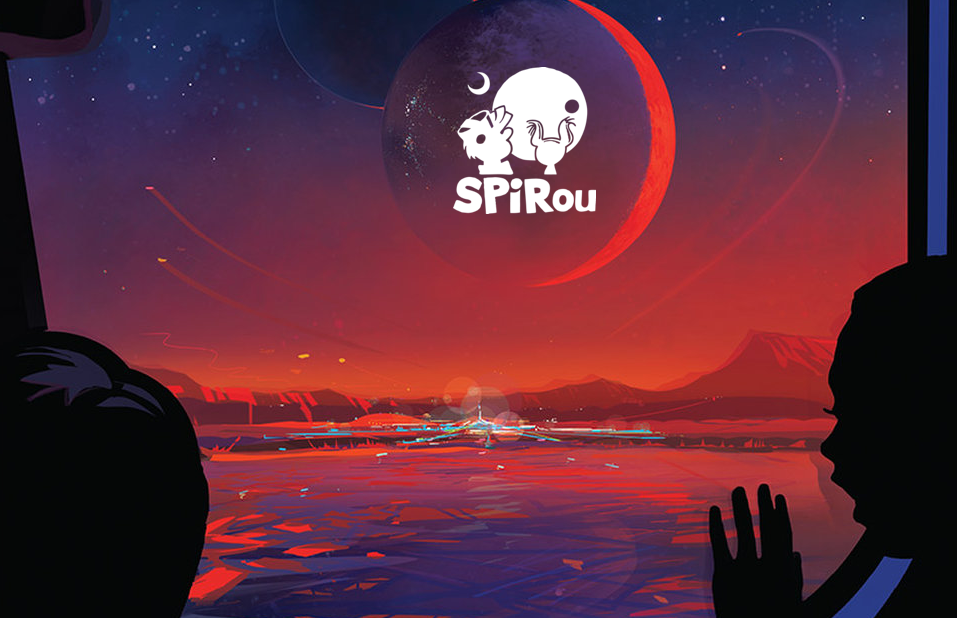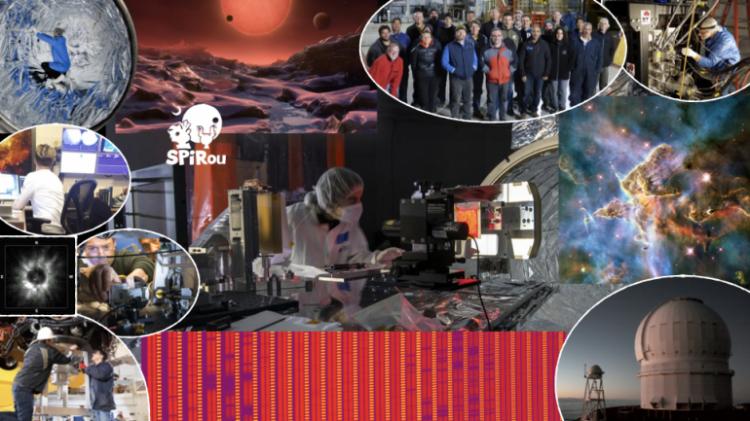2019 January: Green light for SPIRou science at CFHT
SPIRou passed the final acceptance review
Almost exactly one year after reaching its new home atop Maunakea on the big island of Hawaii, and following one complete year of intense in-lab and on-sky testing at CFHT, SPIRou passed the final acceptance review on 2019 January 24, and is now ready to initiate its exciting scientific exploration.

During this testing period, the performance of SPIRou was scrutinized by the project team on all aspects that matter for science observations (mainly wavelength domain, resolving power, spectral response, radial velocity precision and polarimetric capabilities) then compared to expectations to demonstrate that the instrument is mostly compliant with original specifications and ready to tackle the ambitious science programmes for which it was designed.
Acceptance tests demonstrated that SPIRou behaves nominally, apart from a lower throughput in the bluest spectral region (YJ photometric band, spanning 1-1.4 µm) and a brighter thermal background in the reddest spectral region (coming from the warm components of the instrument whose thermal emission becomes strong at 2.3 µm and beyond, compared to the flux of the dim stars that SPIRou will observe). As a spectropolarimeter, SPIRou is also found to perform as expected; its velocimetric precision is estimated to be at least 2 m/s rms, with data reduction and the correction of telluric lines from the Earth atmosphere currently being the main limiting factor (more about this in a forthcoming news).
SPIRou performances were outlined on 2019 January 23 by the project team for the final acceptance review panel, gathering Magali Deleuil (AMU/LAM), Pierre Kern (CNRS/INSU, panel chair), Gaspare LoCurto (ESO), Guy Perrin (CNRS/INSU), John Rayner (UH), Andy Sheinis (CFHT), Doug Simons (CFHT CEO, panel co-chair) and Michael Toplis (OMP). Following a discussion session on the following day, the panel members gave SPIRou a green light to begin its quest for new worlds beyond our Solar System, in the form of planetary systems of nearby red dwarfs like the one discovered around Trappist-1, or infant stars and their planet-forming accretion discs that are still evolving towards maturity.
With 50 nights already scheduled in semester 2019a and 300 nights allocated over the next 4 years for a large programme (called the SPIRou Legacy Survey) on SPIRou main science goals, SPIRou is already the main bright-time instrument at CFHT and is expected to rapidly ramp up in the forthcoming semesters.
The SPIRou project and science teams warmly thank the CFHT staff for its key participation in the successful implementation of SPIRou on the telescope, and the final acceptance review panel members for their time and insightful opinion on how to further improve the performance of SPIRou.



